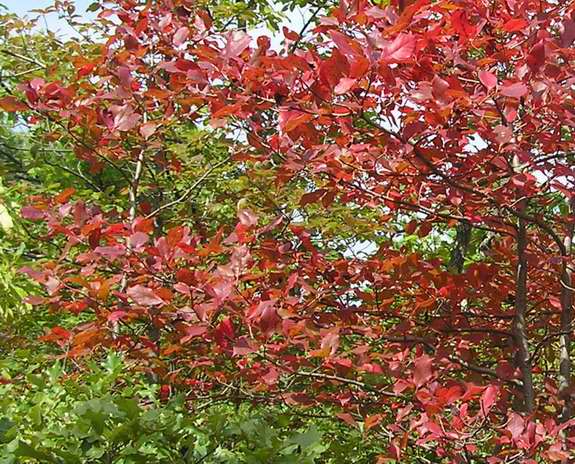|
Common Name: Black Tupelo (from the Creek Indian words ito meaning tree and opilwa meaning swamp for the related Swamp Tupelo) Black Gum, Pepperidge Scientific Name: Nyssa sylvatica (Nyssa is the name of a water sprite in Greek mythology, referring to the tree's preference for wet areas-the related water tupelo N. aquatica actually grows in water; sylvatica is from the Latin word silva, meaning forest.) Potpourri: Black tupelo is one of the first trees to change color in autumn. This occurs because the leaves stop producing green chlorophyll when a layer of cells at the base of each leaf called the abscission is triggered by the cold to form a cork-like membrane that interrupts the flow of nutrients. The deep red is the result of anthocyanin (from Greek anthos meaning flower and kyanos meaning blue, as it causes both red and blue hues in many plants) which is under the chloroplasts in the leaf. The reason why some plants produce the red pigment is subject to some conjecture. One theory is that anthocyanin absorbs damaging light wavelengths that are outside the range of other leaf chemicals, thus protecting the leaf from the damage associated with the Sun's ionizing radiation. The tough, interlocking grain of Tupelo wood made it ideal for gun stocks, tool handles, plows and rough flooring, though it is now more widely used as veneer, scaffolding, woodenware, railroad cross-ties and to make pulp for the paper industry. Tupelo trees typically decay from the top down and from the heartwood out and therefore commonly form hollow stumps. Stumps of hollowed out trees were used for beehives and called bee-gums or for trapping rabbits and called rabbit-gums. |
